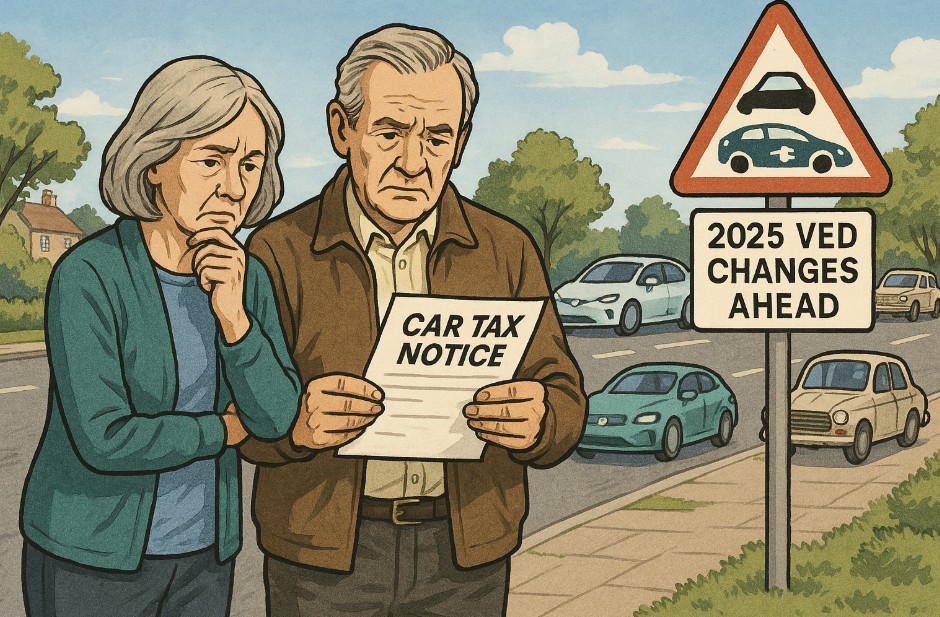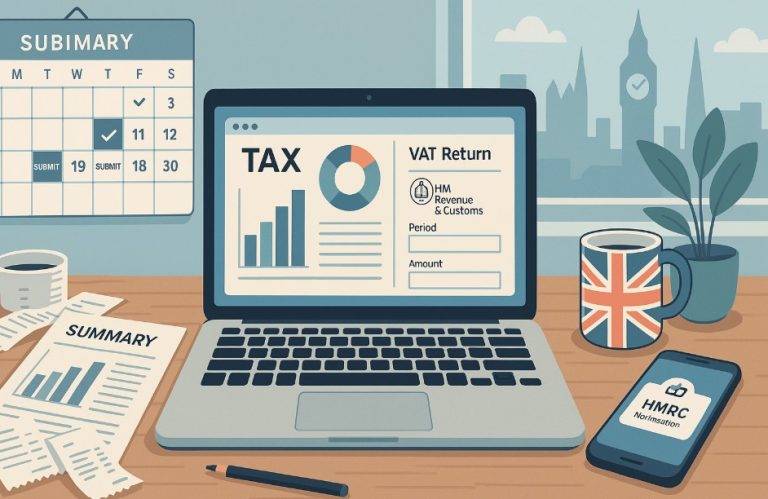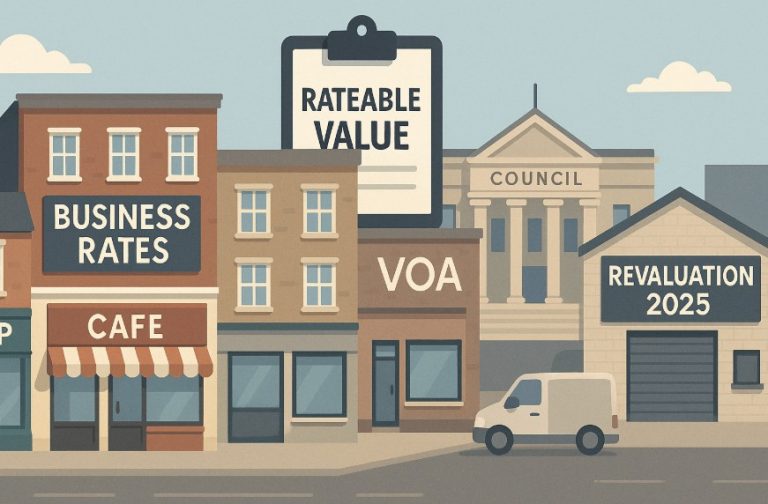Older Drivers Car Tax Changes Explained: How New Rules Could Affect You?
The UK’s road tax landscape is undergoing its most comprehensive transformation in recent history.
These updates, set to take effect from 1 April 2025, are part of a broader government strategy aimed at reducing carbon emissions and promoting the uptake of electric vehicles (EVs).
While the initiative supports environmental goals, it could pose serious financial implications, particularly for older drivers who are more likely to own petrol or diesel vehicles.
Older motorists, many of whom have held on to their vehicles for a decade or longer, are less likely to transition quickly to electric alternatives.
As a result, they could be disproportionately impacted by rising Vehicle Excise Duty (VED) rates, stricter emissions-related charges, and the removal of several exemptions.
This comprehensive guide explores the new car tax rules, who they affect, and what older drivers across the UK can do to prepare.
What Are the Recent Car Tax Changes for Older Drivers in the UK?
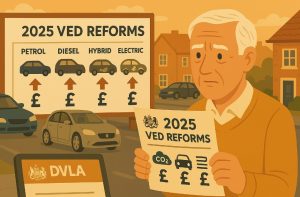
The 2025 car tax reforms represent a clear shift towards an emissions-based taxation system.
No longer will the primary determinant of road tax be just the type of fuel or vehicle class now, CO₂ emissions and the vehicle’s environmental footprint will be front and centre in how VED is calculated.
These changes are not limited to new cars. Although the most significant first-year tax hikes will apply to vehicles registered after April 2025, many existing vehicle owners will also face higher standard annual VED charges.
Some of the most impactful changes include:
- Electric vehicles (EVs), which were previously exempt, will now pay both a first-year and annual VED fee.
- First-year VED, or “showroom tax”, will increase dramatically based on emissions levels, with high-emission vehicles facing charges as high as £5,490.
- The standard annual rate of VED will increase in line with inflation, measured through the Retail Price Index (RPI).
- Luxury Car Supplement previously applied only to high-end petrol and diesel cars will now extend to EVs valued over £40,000.
The policy’s intention is to create a level playing field and maintain tax revenues as more drivers transition to electric vehicles.
However, it risks placing additional pressure on older drivers, who often live on fixed incomes and drive vehicles that do not meet the newest emissions standards.
Why Are Older Drivers Being Affected by the New Vehicle Tax Rules?
Older motorists are among those most vulnerable to the new tax regime, not because of their age, but due to the age and type of vehicles they typically own.
Statistical research by Go. Compare revealed that baby boomers, those born between 1946 and 1964, are among the least likely to drive electric or hybrid vehicles.
Just 6% of drivers in this demographic use electric or hybrid vehicles, compared to 11% of millennials and 9% of Generation X.
This means a vast proportion of older drivers own petrol or diesel cars with higher CO₂ emissions, which are now subject to much higher tax bands. Go.
Compare estimates that this demographic shift could result in an additional £40.5 million in tax liabilities for baby boomers alone.
Another factor is the lower vehicle turnover rate among older drivers. Unlike younger generations who may be more willing or financially able to upgrade vehicles every few years, older motorists often maintain ownership of the same vehicle for a decade or longer.
This long-term ownership of older, high-emission cars means they will continue to be affected by the higher VED rates well into the future.
| Generation | EV or Hybrid Ownership (%) | Petrol/Diesel Ownership (%) |
| Baby Boomers (1946–64) | 6% | 94% |
| Gen X (1965–80) | 9% | 91% |
| Millennials (1981–96) | 11% | 89% |
What Do the DVLA and HMRC Say About These New Regulations?
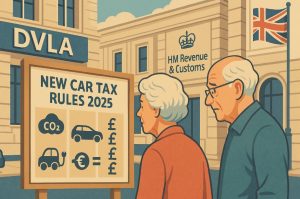
The Driver and Vehicle Licensing Agency (DVLA) and HM Revenue & Customs (HMRC) have both stated that the car tax changes are designed to reflect a modernised, fairer system.
With more than 16% of new car registrations now being electric or hybrid, the government is adapting the VED structure to ensure continued revenue collection as petrol and diesel sales decline.
Previously, the government provided generous tax relief to early adopters of EVs. But with growing market share and an anticipated ban on the sale of new petrol and diesel cars by 2035, the tax relief is being phased out to avoid revenue gaps.
HMRC argues that these tax reforms will help to incentivise low-emission vehicles, support climate goals, and better reflect the real-world environmental cost of motoring.
Which Types of Vehicles Will Become More Expensive to Tax in 2025?
The new VED rules significantly increase the first-year tax on vehicles, especially those emitting higher levels of CO₂. This tax is calculated based on the emissions band the vehicle falls into, ranging from zero to over 255g/km.
The following table outlines the updated 2025 first-year VED rates:
| CO₂ Emissions (g/km) | First-Year VED (2025) | Previous Rate | Increase |
| 0 | £10 | £0 | +£10 |
| 1–50 | £110 | £10 | +£100 |
| 51–75 | £130 | £30 | +£100 |
| 76–90 | £270 | £135 | +£135 |
| 91–100 | £350 | £175 | +£175 |
| 101–110 | £390 | £195 | +£195 |
| 111–130 | £440 | £220 | +£220 |
| 131–150 | £540 | £270 | +£270 |
| 151–170 | £1,360 | £680 | +£680 |
| 171–190 | £2,190 | £1,095 | +£1,095 |
| 191–225 | £3,300 | £1,650 | +£1,650 |
| 226–255 | £4,680 | £2,340 | +£2,340 |
| Over 255 | £5,490 | £2,745 | +£2,745 |
A BMW M4 or Range Rover emitting over 225g/km CO₂ could cost more than £4,000 in tax during its first year alone. Even vehicles traditionally viewed as eco-conscious, such as the Toyota Yaris Hybrid, will see their tax bills rise from £165 to £350.
To clearly see the cost difference based on registration date and car price, the table below outlines new EV tax rules.
Electric Vehicle VED Charges from April 2025
| EV Registration Date | First-Year VED | Standard Rate (Year 2+) | Luxury Car Supplement | Total Annual (If >£40k) |
| Before April 2017 | £0 | £0 | £0 | £0 |
| April 2017 – March 2025 | £0 (historically) | £195 | £410 (if >£40k) | £605 |
| From April 1, 2025 | £10 | £195 | £410 (if >£40k) | £605 |
What Will Electric Vehicle Owners Be Required to Pay From 2025?
Until now, electric vehicles were exempt from VED, a policy that significantly encouraged their adoption. From April 2025, however, this is set to change. All newly registered electric vehicles will pay:
- £10 in the first year
- £195 annually from the second year onwards
Additionally, EVs with a list price over £40,000 will be subject to the Luxury Car Supplement, currently set at £410 per year for the first five years of ownership. That brings the annual tax for premium EVs to £620 from year two through year six.
While this may seem like a reversal of previous policy, it reflects the growing market dominance of EVs and ensures that vehicle tax revenue remains robust as petrol and diesel cars are phased out.
How Are Older Vehicles Taxed if They Were Registered Before 2017?

Vehicles registered before 1 April 2017 are taxed under a different system, which is based on CO₂ emissions (for cars registered after March 2001) or engine size (for those registered before).
For example:
- A car in Band A (up to 100g/km CO₂) is taxed at £20 per year
- A car in Band M (over 255g/km CO₂) pays £760 annually
For vehicles registered before 1 March 2001:
- Engines under 1549cc are charged £220
- Engines over 1549cc are charged £360
Many of these vehicles are still owned by older drivers who purchased them for their reliability and ease of maintenance.
Here’s a breakdown of how pre-2017 vehicles are taxed:
Tax Bands for Vehicles Registered Between 2001–2017
| VED Band | CO₂ Emissions (g/km) | Annual Rate (2025) |
| A | Up to 100 | £20 |
| C | 111–120 | £35 |
| E | 131–140 | £155 |
| G | 151–165 | £240 |
| I | 176–185 | £300 |
| M | Over 255 | £760 |
For vehicles registered before March 2001, engine size determines tax:
| Engine Size | Annual Tax |
| Up to 1549cc | £220 |
| Over 1549cc | £360 |
These vehicles are still common among older drivers and are some of the most impacted by VED increases.
How Are Plug-in Hybrids and Mild Hybrids Taxed Differently in 2025?
In 2025, plug-in and mild hybrid vehicles will be taxed based on CO₂ emissions alone, with no special rate advantages.
A plug-in hybrid emitting:
- 1–50g/km CO₂ will pay £110 in the first year
- 51–75g/km CO₂ will pay £130
Mild hybrids, which emit more and offer limited electric support, fall into higher bands. A mild hybrid emitting 101–110g/km will now pay £390 in its first year, up from £195, a significant jump.
This highlights the importance of emissions awareness when purchasing a hybrid, as VED rates vary dramatically even within this category.
Plug-in and Mild Hybrid VED Comparison (2025)
| Hybrid Type | CO₂ Range (g/km) | First-Year VED |
| Plug-in Hybrid | 1–50 | £110 |
| Plug-in Hybrid | 51–75 | £130 |
| Mild Hybrid | 101–110 | £390 |
| Mild Hybrid | 111–130 | £440 |
This clearly shows that mild hybrids are treated more like traditional petrol vehicles, making plug-in options more attractive under VED rates.
How Does the DVLA Track Unpaid or Expired Car Tax in 2025?
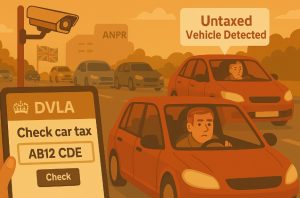
Though paper tax discs were abolished in 2014, enforcement has only become more rigorous. The DVLA uses Automatic Number Plate Recognition (ANPR) cameras mounted on roads and police vehicles to identify untaxed cars.
If your vehicle is found untaxed:
- A Late Licensing Penalty (LLP) of £80 is issued (reduced to £40 for early payment)
- Continued non-payment can result in the vehicle being clamped, impounded, or destroyed
- Reclaiming a vehicle can cost over £200, plus daily storage charges
- Court action could lead to fines up to £1,000 or five times the owed tax
How Can Older Drivers Save Money on Their Car Tax?
Older motorists can minimise the impact of these reforms by:
- Checking their vehicle’s tax band and emissions via the GOV.UK portal
- Reviewing their V5C logbook for registration and emissions details
- Considering a switch to a low-emission or electric vehicle
- Budgeting for a higher upfront VED when buying a new car
- Exploring local schemes that may offer financial support or tax relief
VED Cost Comparison: New vs Old Vehicle Types (Annual)
| Vehicle Type | Estimated VED (2025) |
| Petrol (Euro 4 or below) | £395 |
| Diesel (Pre-2009, no DPF) | £505 |
| Hybrid (Plug-in, low CO₂) | £110–130 (Year 1) |
| EV (registered after Apr 2025) | £195 |
| EV (price > £40k) | £605 |
This comparison helps older drivers assess the long-term savings of switching to low-emission or electric alternatives, especially considering fuel and maintenance costs.
What Will These Changes Mean for Older Drivers in the Long Term?
The overall effect is clear: older drivers maintaining high-emission vehicles will face higher running costs year after year. However, these reforms are also an opportunity to consider cleaner, more cost-efficient motoring options.
While EVs will no longer be tax-free, their lower running costs, favourable BiK rates, and corporate incentives still make them a more affordable option over time.
Frequently Asked Questions About Older Drivers and UK Car Tax Changes
Will pensioners still get car tax discounts in 2025?
While no age-specific discounts exist, older drivers may qualify for exemptions if they meet disability criteria or own historic vehicles.
How can older drivers check their vehicle’s tax band?
Use the official GOV.UK tax checker with your registration number.
Are electric cars better for older drivers looking to save on tax?
Yes. Despite the new charges, EVs generally cost less in fuel, maintenance, and overall VED.
Do all older cars face higher tax under the new rules?
Not all. Vehicles over 40 years old may qualify for historic vehicle exemptions. Others will see increased tax depending on emissions and registration date.
Is there a way to appeal or contest a car tax increase?
No formal appeal exists, but reclassification of the vehicle or eligibility for exemptions may help reduce liability.
What documentation do older drivers need to apply for exemptions?
Typically, your V5C logbook, proof of emissions, and, where applicable, evidence of disability or low usage.
Are there any local council schemes to support senior motorists?
Yes, but these vary by region. Some councils offer discounted parking, reduced charges for limited mileage, or blue badge holder benefits.

